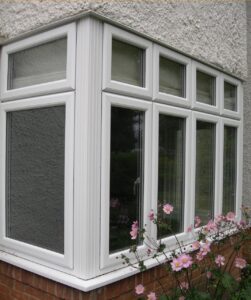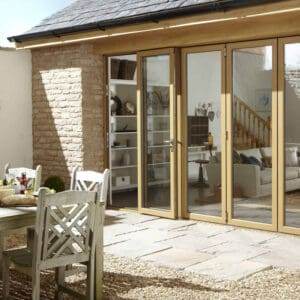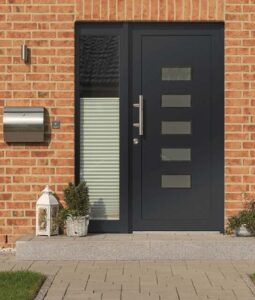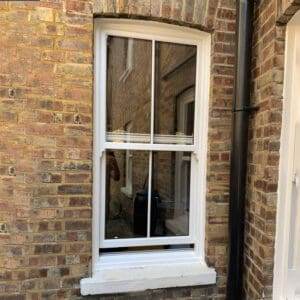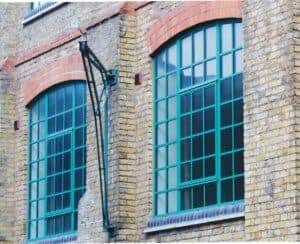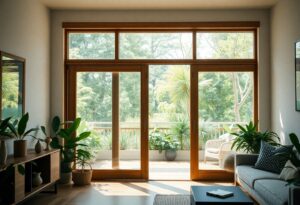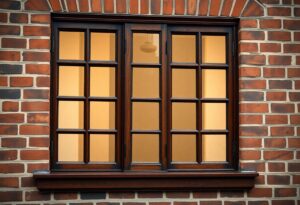Integrity in construction is paramount, especially when considering the longevity of your steel windows. Through advanced galvanization methods, you can ensure that your windows hold up against environmental challenges for decades, maintaining both aesthetic appeal and structural strength. These techniques significantly reduce risks of corrosion, offering you peace of mind. If you’re exploring the benefits of steel in architecture, check out 6 Reasons to Consider the Luxury of Steel Windows and … to further understand the value they bring.
Overview of Galvanization
Before delving into advanced methods, it’s vital to understand the basic principle of galvanization. This process involves coating steel or iron with a protective layer of zinc to prevent corrosion. The result not only enhances the metal’s durability but also conserves its structural integrity over time.
Historical Context
Against a backdrop of industrial progression, galvanization emerged as a significant innovation in the 19th century, primarily developed to extend the lifespan of metals exposed to harsh environments. By adopting this method, numerous industries witnessed enhanced resilience, thereby revolutionising construction practices.
Types of Galvanization Techniques
Beside the traditional methods of galvanization, several techniques exist that cater to varying requirements in steel treatment, each with its own advantages. These include:
- Hot-dip galvanization
- Electrogalvanization
- Mechanical galvanization
- Galvaneal
- Metal spraying
Recognising these methods allows you to select the most appropriate approach for your specific project, enhancing longevity and performance.
| Technique | Description |
|---|---|
| Hot-dip galvanization | Involves immersion in molten zinc, creating a robust layer. |
| Electrogalvanization | Utilises electrolytic processes to deposit zinc. |
| Mechanical galvanization | Involves abrasive processing for a metal surface finish. |
| Galvaneal | Combines galvanization with heat treatment for enhanced adhesion. |
| Metal spraying | Sprays zinc particles onto the surface, offering an alternative. |
Even with the variety of techniques available, the effectiveness varies based on the project’s specific needs and environmental conditions. When choosing a galvanization method, it’s vital to consider factors such as cost, application, and environmental exposure. Recognising these key elements will aid in ensuring the long-term protection of your structural steel.
| Key Factor | Importance |
|---|---|
| Cost | Budget considerations may influence your method choice. |
| Application | Your intended use can dictate suitability of method. |
| Environmental exposure | Different methods perform variably in diverse environments. |
| Durability | Evaluate how long protection will last in practice. |
| Maintenance | Consider ongoing upkeep requirements for your choice. |
Advanced Galvanization Methods
It is important to understand the various advanced galvanization methods that enhance the longevity and durability of steel windows. These methods not only protect against corrosion but also ensure that structural integrity is maintained over decades. Key techniques include:
- Hot-Dip Galvanization
- Electro-Galvanization
Method Overview
| Method | Description |
|---|---|
| Hot-Dip Galvanization | Involves immersing steel in molten zinc for excellent corrosion resistance. |
| Electro-Galvanization | Applies zinc through electrolysis, providing a thinner, more uniform coating. |
Hot-Dip Galvanization
Against corrosion, hot-dip galvanization serves as a robust barrier. This method entails immersing your steel components in molten zinc, creating a bond that significantly increases their resistance to harsh environmental conditions. With this technique, you can expect your windows to withstand adverse weather for decades, maintaining functionality and aesthetics.
Electro-Galvanization
HotDip galvanization differs from traditional methods by using electricity to apply a thin layer of zinc. This process offers a smoother finish and can be adapted for specific applications, providing you with flexibility in design. However, the coating is generally less thick than that achieved through hot-dip methods, meaning you should assess your environmental exposure carefully.
Another important factor with electro-galvanization is its eco-friendliness. This method generates less waste and uses energy more efficiently compared to hot-dip galvanization. The typically thinner layers negate the need for excessive zinc, which is advantageous. However, be cautious; if subjected to highly corrosive conditions, electro-galvanized surfaces may require additional protective measures for optimal performance.

Impact of Galvanization on Structural Integrity
If you consider the longevity of your steel windows, the impact of galvanization is significant. This protective process not only enhances resistance to wear, but also maintains aesthetic appeal. By investing in Galvanized Steel Windows And Doors, you ensure that your installations will withstand the test of time, preserving their structural integrity for decades to come.
Corrosion Resistance
On the subject of corrosion resistance, galvanization plays a vital role in protecting steel from the elements. The zinc coating acts as a barrier, preventing moisture and corrosive agents from reaching the underlying steel. This means that your windows remain robust and visually appealing over time, without succumbing to rust or deterioration.
Longevity and Durability
Along with corrosion resistance, galvanization contributes to the overall longevity and durability of steel windows. The enhanced protective layer significantly reduces the likelihood of structural weaknesses developing, ensuring that your installations maintain their strength even in challenging weather conditions.
Galvanization significantly extends the lifespan of your steel windows, providing a robust barrier against the elements. By protecting against rust, this method ensures your windows remain structurally sound for decades. The initial investment in galvanised steel is an excellent choice as it reduces the need for frequent repairs, ultimately saving you time and money. Your property not only benefits from added aesthetic appeal, but also enjoys enhanced structural integrity that could withstand the harshest of environments.
Case Studies: Steel Windows in Various Environments
Your understanding of how steel windows perform across different environments is evident through various case studies. Here are some remarkable examples:
- London, UK: Over 50 years of structural integrity with zero deterioration in urban settings.
- San Francisco, USA: Steel windows in coastal fog areas maintained excellent corrosion resistance for over 40 years.
- Berlin, Germany: Historic buildings with steel frames have withstood harsh winters since the late 20th century.
- Sydney, Australia: Exposure to salty air has shown only minimal wear over a 30-year period.
You can read more about the resilience of Modern Steel Windows: Will they Stand the Test of Time? for further insights.
Urban Environments
Below are examples of steel windows successfully enduring the challenges of urban settings. With increasing pollution levels, these windows have proven their durability and low-maintenance necessity. Steel windows in prominent cities retain their aesthetic while ensuring long-term performance.
Coastal Environments
By analysing performance metrics, steel windows in coastal areas demonstrate remarkable resilience against sea air, maintaining their integrity over the years. They often incorporate advanced galvanization methods, which significantly enhance their corrosion resistance.
Case studies reveal that in locations like Miami, steel windows faced severe salt spray exposure but have lasted over 25 years without significant corrosion. Similarly, installations in Cape Town show resistance to UV damage and moisture penetration, affirming that well-maintained steel structures can thrive in even the most challenging coastal conditions.

Maintenance Practices for Galvanized Steel Windows
Despite their robust nature, galvanized steel windows require regular maintenance to ensure their longevity. By adhering to a few crucial practices, you can effectively preserve your windows’ integrity and aesthetic appeal, preventing costly repairs and replacements in the long run.
Inspection and Repair
On a routine basis, you should inspect your galvanized steel windows for any signs of wear or damage. Look for rust spots, peeling paint, or sealant degradation. Addressing minor issues promptly with appropriate repair methods will significantly prolong their lifespan.
Preventative Measures
Alongside routine inspections, you can implement preventative measures to keep your windows in optimal condition. Regular cleaning and the application of protective coatings will help shield them from environmental factors that can cause deterioration.
Indeed, by performing regular maintenance, you can enhance your galvanized steel windows’ resistance to corrosion and wear. Keeping them clean and free from debris, along with applying relevant protective coatings when necessary, provides an additional layer of defence against the elements. Furthermore, consider ensuring that all joints and seals are properly maintained to prevent moisture ingress, as this can lead to significant structural damage over time. Personal vigilance in these matters will empower you to sustain the beauty and safety of your steel windows for decades to come.
Future Trends in Galvanization Technologies
Now you can expect cutting-edge advancements in galvanization that will enhance the durability and sustainability of steel windows. Innovations in processes and materials will pave the way for longer-lasting solutions that meet the growing demands for energy efficiency and environmental responsibility. As industries evolve, you will find that these trends not only boost structural integrity but also reduce the carbon footprint associated with traditional galvanisation methods.
Innovations in Materials
At the forefront of galvanization technology is the development of new materials that improve resistance to corrosion and environmental factors. You will see a shift towards using advanced alloys and coatings which can significantly enhance the lifespan of steel windows, safeguarding your investment for decades to come.
Sustainable Practices
One key aspect of future galvanization methods is the emphasis on sustainability. You will find that the industry is increasingly focusing on reducing waste and using environmentally friendly materials to minimise the impact on our planet.
Technologies in galvanization are now incorporating recyclable materials and processes that conserve resources. This includes using less harmful chemicals in the coating process and implementing energy-efficient practices that lessen the carbon emissions generated during production. By adopting these sustainable practices, you are not only ensuring the longevity of your steel windows but also contributing to a healthier environment for future generations.
FAQ
Q: What are advanced galvanization methods?
A: Advanced galvanization methods refer to enhanced techniques used to coat steel with zinc to prevent corrosion and improve durability. These methods can include hot-dip galvanizing, electro-galvanizing, and specialised coatings that provide a thicker or more uniform zinc layer. The aim is to extend the lifespan of steel products, particularly in environments where they are exposed to moisture and corrosive elements.
Q: How do these methods enhance the structural integrity of steel windows?
A: Advanced galvanization methods significantly bolster the structural integrity of steel windows by providing a protective barrier against corrosion. The consistent coating of zinc prevents moisture from reaching the underlying steel, thereby reducing the risk of rust and degradation over time. This protection helps maintain the strength and stability of the window frames, allowing them to retain their structural integrity even after decades of exposure to the elements.
Q: What lifespan can be expected from steel windows treated with advanced galvanization?
A: Steel windows that undergo advanced galvanization can typically last for 50 years or more, depending on environmental factors and the maintenance they receive. The enhanced protection from corrosion delays the onset of deterioration, meaning that these windows can perform reliably over an extended period, making them a sound investment for both residential and commercial properties.
Q: Are there any maintenance requirements for steel windows with advanced galvanization?
A: While steel windows treated with advanced galvanization require less maintenance than untreated steel, some care is still necessary to maximise their lifespan. It is advisable to regularly clean the windows to remove dirt and debris, which can hold moisture against the surface. Additionally, periodic inspections for any signs of wear or damage to the galvanised coating should be carried out to address any issues promptly and ensure continued protection against corrosion.
Q: Can advanced galvanization be applied to existing steel windows?
A: Yes, advanced galvanization can be applied to existing steel windows, but the process may involve some preparation. To treat old steel windows, they must first be stripped of their current paint and any rust that may have formed. This ensures that the galvanisation can adhere properly and provide effective protection. It is imperative to consult with professionals who specialise in galvanisation for the best results, ensuring that the windows regain their original strength and protection after the treatment.

